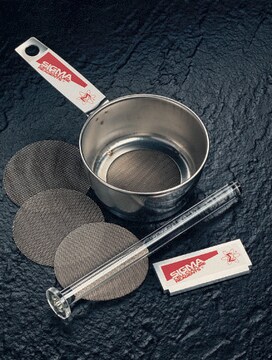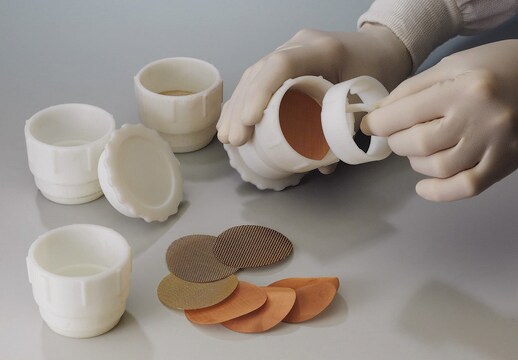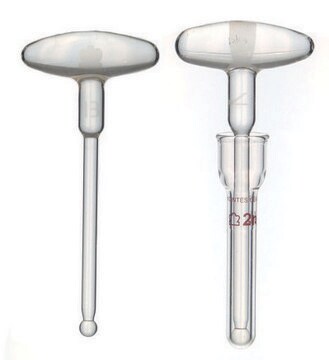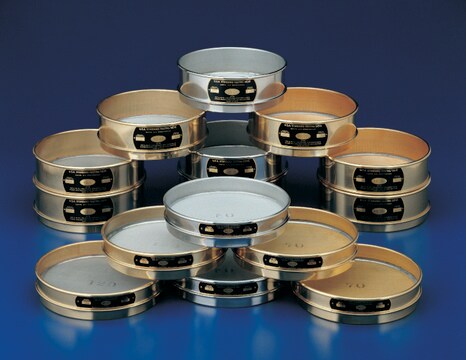Recommended Products
size
85 mL
General description
Screen cup for CD-1™ is a stainless-steel cell dissociation sieve that isdeveloped for the preparation of single-cell suspensions from tissue pieces andto fragment polyacrylamide gels.
Application
Screen cup for CD-1™ has been used as a sieve:
- for isolation of mice neural cells
- in isolation of mice cardiomyocytes
- for filtering cell suspensions of Araucaria angustifolia embryonic cultures
Legal Information
CD-1 is a trademark of Sigma-Aldrich Co. LLC
Certificates of Analysis (COA)
Search for Certificates of Analysis (COA) by entering the products Lot/Batch Number. Lot and Batch Numbers can be found on a product’s label following the words ‘Lot’ or ‘Batch’.
Already Own This Product?
Find documentation for the products that you have recently purchased in the Document Library.
Customers Also Viewed
Glutathione improves early somatic embryogenesis in Araucaria angustifolia (Bert) O. Kuntze by alteration in nitric oxide emission
Leila do N, et al.
Plant Science, 195, 80-87 (2012)
Sara Dutton Sackett et al.
Scientific reports, 8(1), 10452-10452 (2018-07-12)
Extracellular matrix (ECM) plays an important developmental role by regulating cell behaviour through structural and biochemical stimulation. Tissue-specific ECM, attained through decellularization, has been proposed in several strategies for tissue and organ replacement. Decellularization of animal pancreata has been reported
Guang Li et al.
Proceedings of the National Academy of Sciences of the United States of America, 114(21), E4288-E4295 (2017-05-12)
Alternative splicing changes the Ca
Haruta Mogami et al.
Scientific reports, 8(1), 696-696 (2018-01-14)
Preterm premature rupture of membranes (pPROM) is a major cause of preterm birth. Recently, extracellular matrix-directed treatment is applied for wound healing. Here, we used a pregnant mouse model to test the efficacy of collagen type 1 gel for healing
Laurine Legroux et al.
Journal of neuroscience methods, 247, 23-31 (2015-03-31)
Flow cytometry is an efficient and powerful technique to characterize and quantify numerous cells. However, the strengths of this technique have not been widely harnessed in neurosciences due to the critical step of CNS tissue preparation into a single cell
Our team of scientists has experience in all areas of research including Life Science, Material Science, Chemical Synthesis, Chromatography, Analytical and many others.
Contact Technical Service






